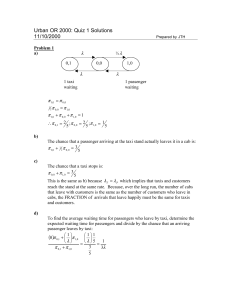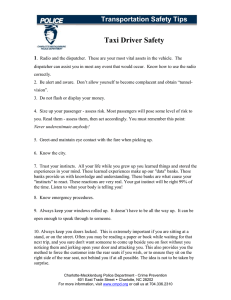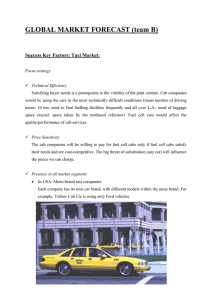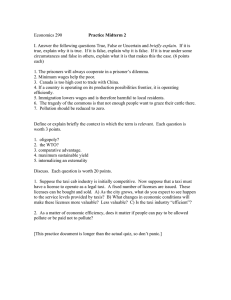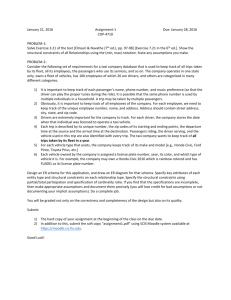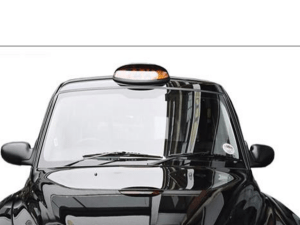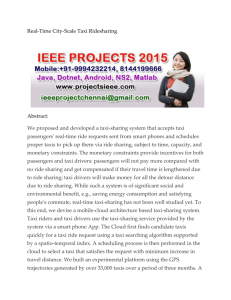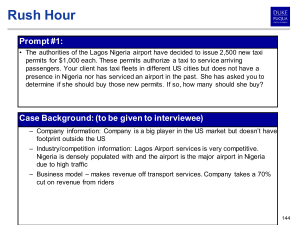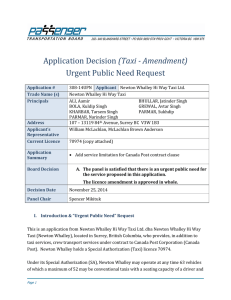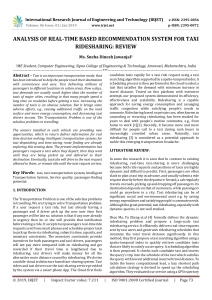Quiz 1
advertisement
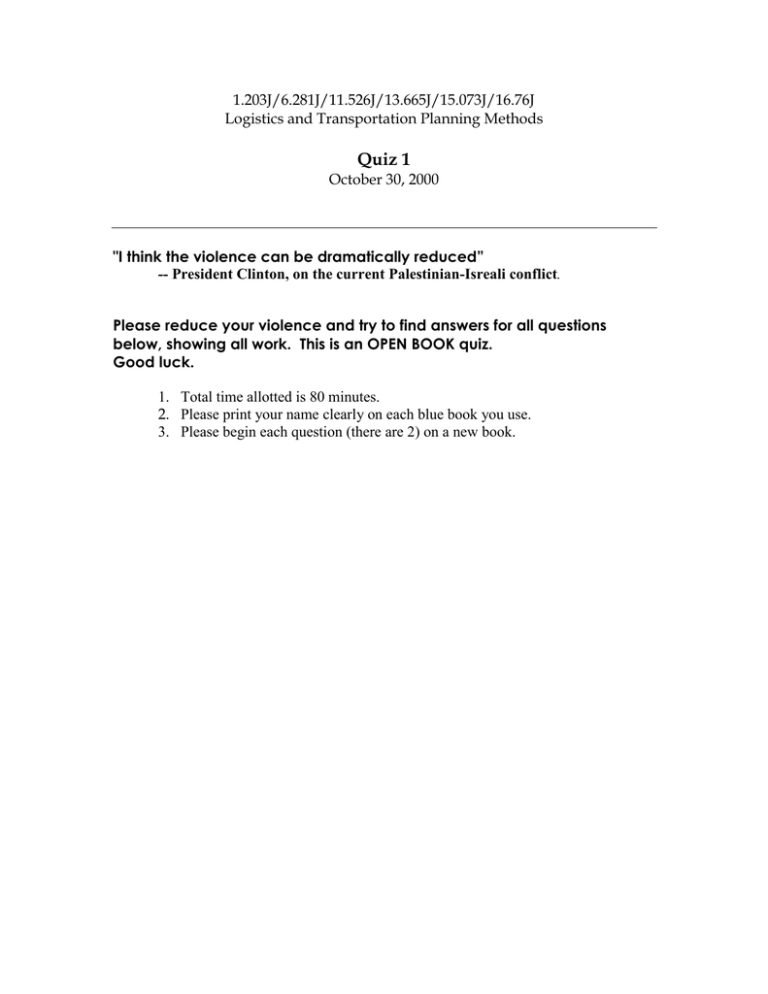
1.203J/6.281J/11.526J/13.665J/15.073J/16.76J Logistics and Transportation Planning Methods Quiz 1 October 30, 2000 "I think the violence can be dramatically reduced” -- President Clinton, on the current Palestinian-Isreali conflict. Please reduce your violence and try to find answers for all questions below, showing all work. This is an OPEN BOOK quiz. Good luck. 1. Total time allotted is 80 minutes. 2. Please print your name clearly on each blue book you use. 3. Please begin each question (there are 2) on a new book. Problem 1 (50 points; all parts carry equal weight) At a taxi stand, both taxis and passengers arrive under independent Poisson processes with parameter λ , i.e. ( λT = λ P = λ ). A taxi will stop at the stand (and, if necessary, await a passenger) if and only if there are no other taxis present. A passenger arriving at the stand will: i. enter a waiting cab if one is there ii. leave the stand if there are any passengers waiting for a cab iii. have a 50% chance of waiting for a cab if there are no taxis and no passengers present Based on this description: a) Draw a transition diagram for the different "states" of the system, and determine the chance that there are no taxis and no passengers at a random moment in time. b) What is the probability that a passenger arriving at the taxi stand will actually leave it in a cab? c) Consider the probability that a taxi reaching the stand stops there. Must this probability be the same as the answer to (b)? Briefly explain. d) Among the passengers who leave the stand by taxi, what is the average waiting time until service starts? (HINT: One way to do this is to consider what happens over a long period T.) e) Let B be the event that two passengers in a row who reach the taxi stand both leave by taxi and have zero waits. What is the probability of B? Problem 2 (50 points; all parts carry equal weight) In an urban region with the triangular shape shown in Figure 1, demand for a certain service is distributed uniformly throughout the region. Travel is according to the right-angle metric, with directions of travel parallel to two of the sides of the triangle, as shown. Distances are given in miles. [NOTE: In doing this problem you are not expected to derive any intermediate or final results you need from scratch. If you recognize by inspection a result you need for any step in the problem, feel free to simply use that result.] a) If a single facility providing the service in question is located at point A (Figure 1), find the expected travel distance from a random demand in the region to the facility at A. b) If two identical facilities are provided, one at A and one at B, as shown in Figure 1, find the expected travel distance from a random demand to its closest facility. (In other words, assume that each demand travels to the facility which is closest to the demand’s location.) c) Assume now that there is a single facility located at B. Find σ 2 (D ) , the variance of the (right-angle) distance from a random demand to the facility at B. [HINT: You can do this problem WITHOUT first obtaining the pdf for D.] d) Consider now the same case as in part (b), involving two facilities, one at A and one at B. However, a vertical barrier of height 0.25 miles has been placed 0.25 miles from B, as shown in Figure 2. Carefully repeat part (b), i.e., compute the expected right-angle travel distance between a random demand in the region and the facility closest to it. [HINT: Work methodically. Is the partitioning of the area the same as in part (b)?]
